There’s a certain magic to rustic farmhouse interiors that captivates both seasoned decorators and those just dipping their toes into the world of design. The allure lies in its seamless blend of rugged charm and cozy elegance, a style that transforms any house into a welcoming home. As you embark on this journey, you’ll find that rustic farmhouse decor is not just about aesthetics; it’s an invitation to create spaces that tell your story through textures, colors, and cherished vintage finds.
For beginners, the rustic farmhouse style offers a delightful playground of possibilities where imperfections are embraced, and simplicity reigns supreme. Experienced decorators, on the other hand, will appreciate the intricate balance of old and new, where timeless pieces coexist with modern comforts. In this article, we’ll explore how you can infuse your home with the warmth and character of a rustic farmhouse, regardless of your starting point.
From selecting the perfect distressed wood finishes to incorporating soft textiles that invite relaxation, you’ll discover practical tips and inspiring ideas to bring this beloved style into your home. We’ll delve into color palettes that evoke tranquility and furniture pieces that promise both functionality and flair. Whether you’re aiming for a complete home makeover or a subtle nod to rustic charm, you’ll walk away with actionable insights that make rustic farmhouse design feel both achievable and rewarding.
Choosing Authentic Farmhouse Materials
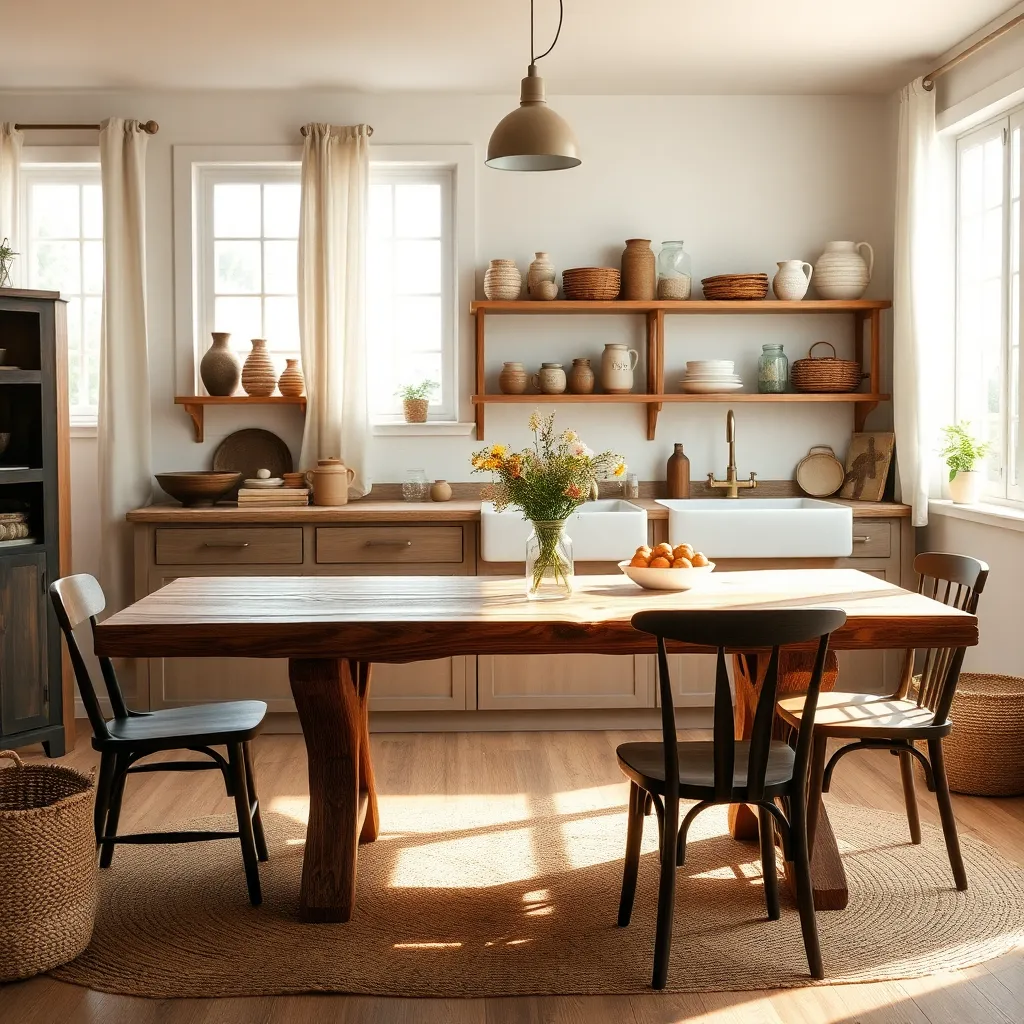
Embracing authentic farmhouse materials starts with selecting the right type of wood. Opt for reclaimed wood, which not only adds a rustic charm but also contributes to a sustainable design approach.
Incorporate natural stone elements to accentuate the farmhouse aesthetic. Use limestone or slate for flooring or fireplace surrounds to introduce texture and earthy tones into your space.
Consider metal as a complementary material to wood and stone. Wrought iron can be used for lighting fixtures and cabinet handles, providing a vintage touch that enhances the farmhouse appeal.
Beginner decorators should focus on keeping the color palette neutral and warm. Advanced designers might experiment with mixing different wood tones to create depth and interest, ensuring the overall look remains cohesive.
Incorporating Warm Earthy Tones
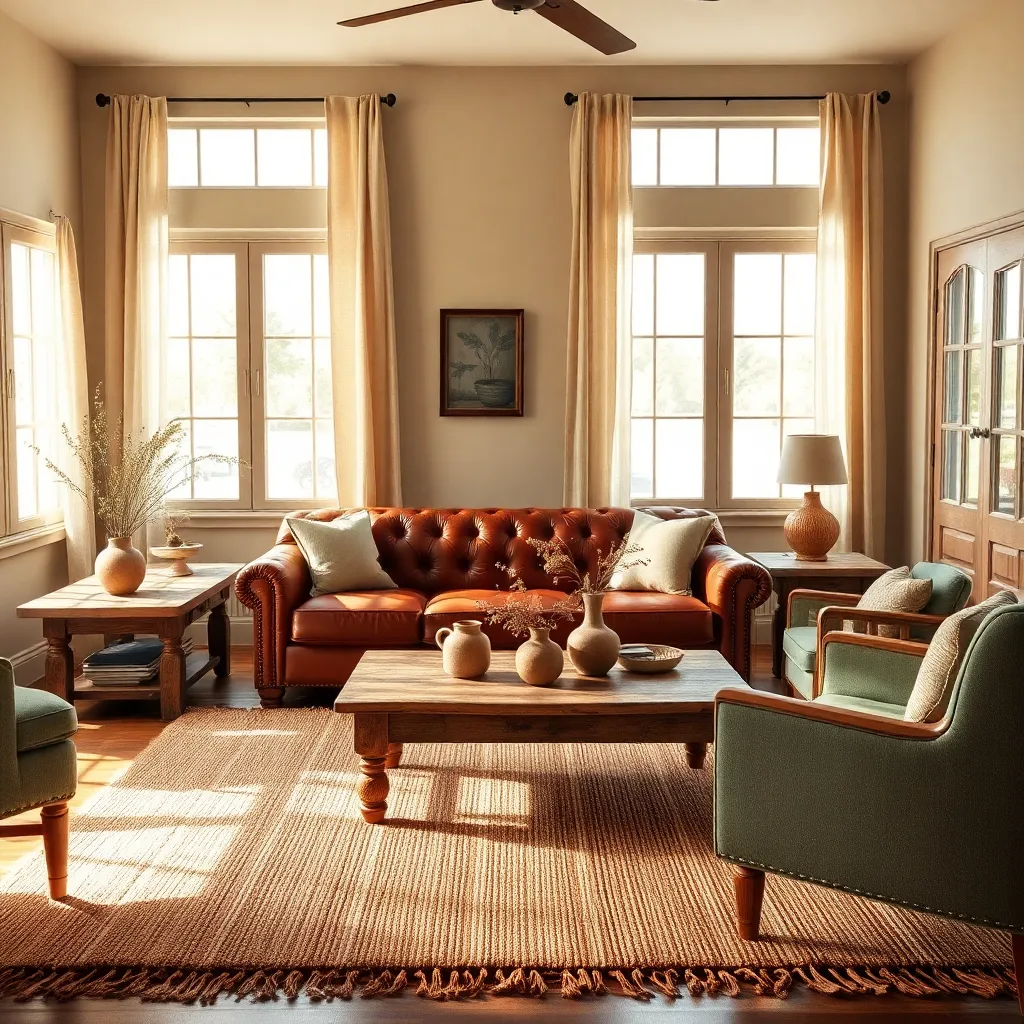
Incorporating warm earthy tones is a quintessential step in achieving a rustic farmhouse aesthetic. Start by selecting a color palette that includes shades like terracotta, mustard, and olive green, which can create a cozy and inviting ambiance.
Furniture selection is key when working with these tones. Opt for pieces made from natural wood with visible grain patterns, such as oak or reclaimed wood, which enhance the warmth of the colors around them.
Placement is equally important to ensure a balanced look. Arrange your furniture to create a focal point, such as a rustic wooden coffee table surrounded by plush seating in earthy hues, to draw the eye and offer a welcoming gathering spot.
For those looking to add depth and interest, consider incorporating textures. Use items like woven baskets, clay pottery, and wool throws, which not only complement the earthy tones but also add layers of visual interest and tactile comfort.
- Pair muted wall colors with vibrant earthy accents for a balanced look.
- Introduce patterned textiles, such as kilim rugs or plaid throws, to add character.
Mixing Vintage and Modern Elements
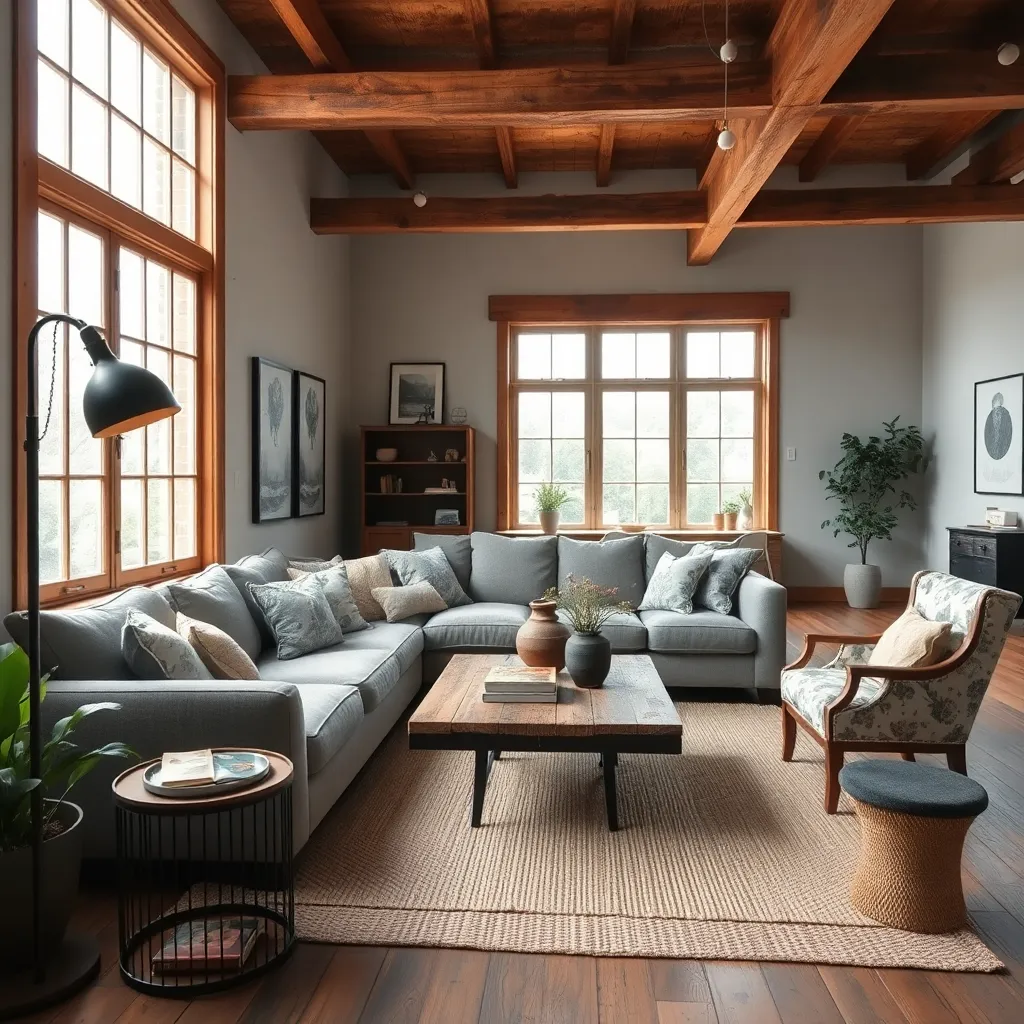
Combining vintage and modern elements can breathe new life into a rustic farmhouse interior. Start by selecting a statement piece, like a vintage wooden dining table, and pair it with sleek, modern chairs to create a balanced look.
A great way to mix these styles is through your choice of textiles and accessories. Opt for a modern geometric-patterned rug to sit under a rustic wooden coffee table, adding visual interest and texture.
Consider the color palette when blending these styles; use neutral tones as a base. This can include white or cream walls, allowing vintage brass fixtures and contemporary artwork to stand out without clashing.
For advanced decorators, layering is key to successfully integrating vintage and modern elements. Incorporate a mix of textures by placing a plush velvet sofa next to a distressed wood bookshelf, ensuring each piece enhances the room’s character.
Enhancing Spaces with Textured Fabrics
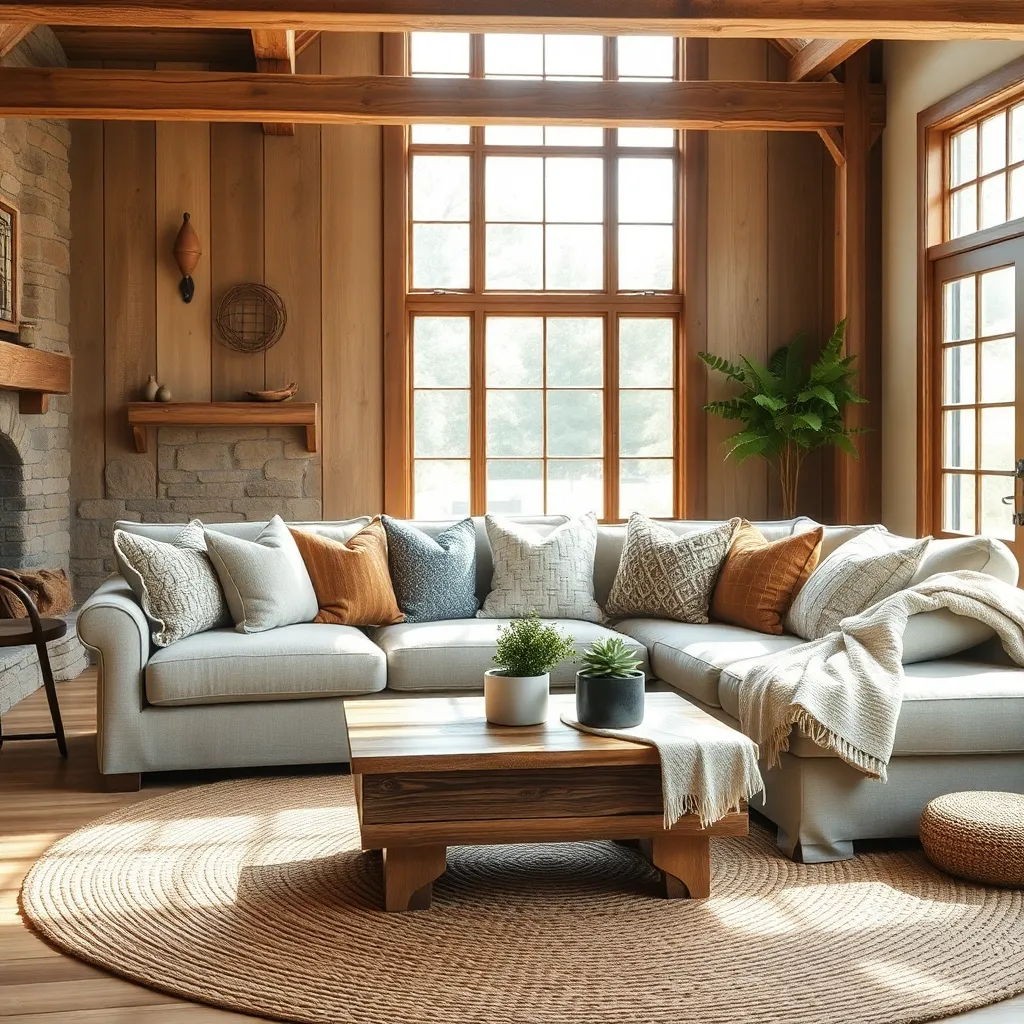
Incorporating textured fabrics into a rustic farmhouse interior can instantly elevate the warmth and charm of the space. Start by selecting materials like burlap, linen, or wool, which naturally complement the rustic aesthetic while adding depth and interest.
Layering is key to achieving a cohesive look with textured fabrics. Consider draping a chunky knit throw over a leather sofa or adding a few linen cushions to a wooden bench to provide a mix of textures that invite coziness.
For those looking to make a bold statement, opt for a patterned jute rug or a woven tapestry as a focal point. These pieces not only add texture but also introduce visual interest and can help define different areas within an open-plan space.
Advanced decorators can explore pairing textures with contrasting colors to create dynamic visual effects. Try using a soft, neutral palette as the base and introduce pops of color through textured accessories like a vibrant chenille pillow or a rich velvet ottoman.
Accessorizing with Rustic Charm
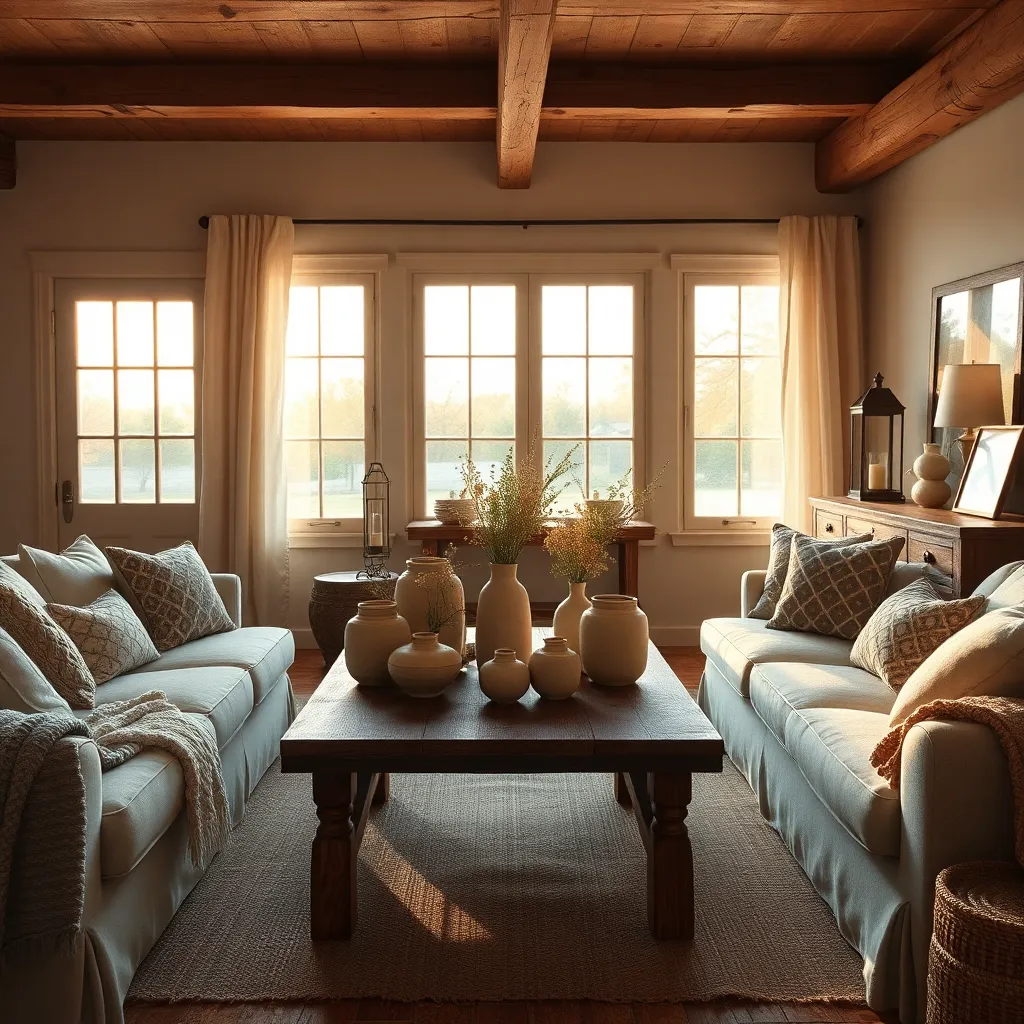
To infuse your space with rustic charm, start by selecting accessories that boast natural materials like wood, stone, and metal. Choose items such as wooden bowls, wrought iron candle holders, and stoneware vases to create an earthy, grounded feel.
Consider the placement of your accessories to ensure they complement the room’s layout and flow. Cluster smaller items in groups of threes or fives on shelves, mantels, or coffee tables to achieve a balanced and visually appealing arrangement.
Layering textures is key to a cozy rustic aesthetic, so incorporate textiles with rich, tactile qualities. Think of woven baskets, burlap table runners, and linen throw pillows to add depth and warmth to your space.
For those looking to elevate their decor, experiment with mixing metals for a sophisticated yet rustic vibe. Pairing antique brass with matte black or aged copper can create a stunning contrast that feels both timeless and chic.
Conclusion: Growing Success with These Plants
In exploring the synergy between rustic farmhouse interiors and robust relationships, we’ve uncovered five key concepts: embracing authenticity, fostering warmth, creating shared spaces, valuing simplicity, and nurturing growth. Authentic settings remind us to be genuine with our partners, while warm environments cultivate trust and love. Shared spaces encourage connection, simplicity reduces stress, and nurturing growth ensures that our relationships evolve positively.
As an actionable next step, consider transforming a corner of your home into a cozy, shared nook where you and your partner can connect, free from distractions. This dedicated space can be as simple as a comfy chair with a small table, inviting daily conversations and shared moments.
Feel empowered to weave these principles into the fabric of your relationship, and remember, success is built on the foundations of mutual respect and understanding. To revisit these insights and continue enhancing your partnership, save or bookmark this article now. Doing so will keep you inspired and equipped to cultivate a relationship that thrives amid life’s rustic charm. Embrace these concepts today, and look forward to a future where your relationship flourishes, just like a beautifully curated farmhouse interior.
